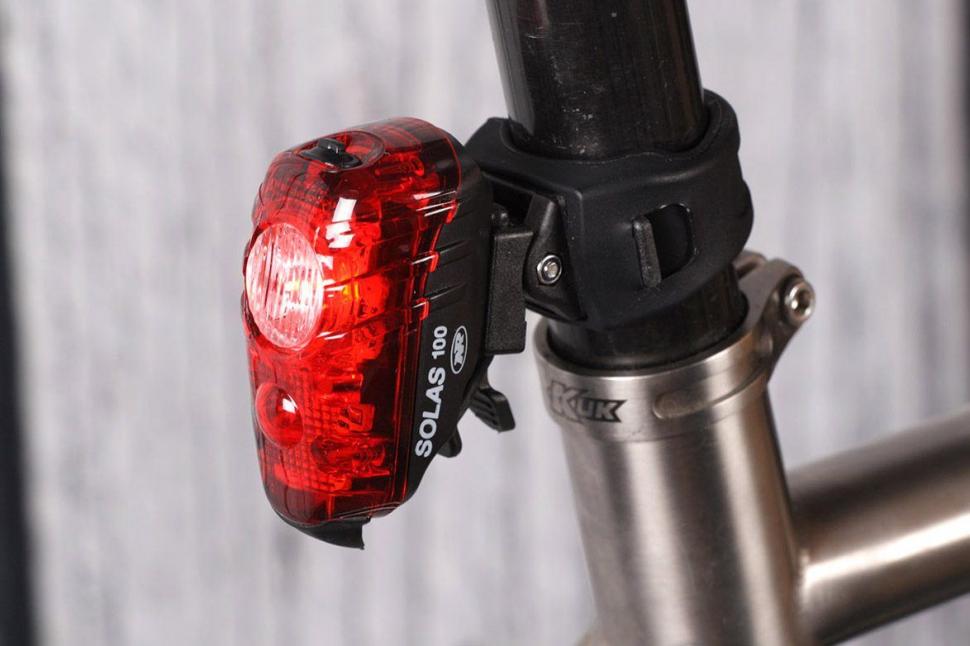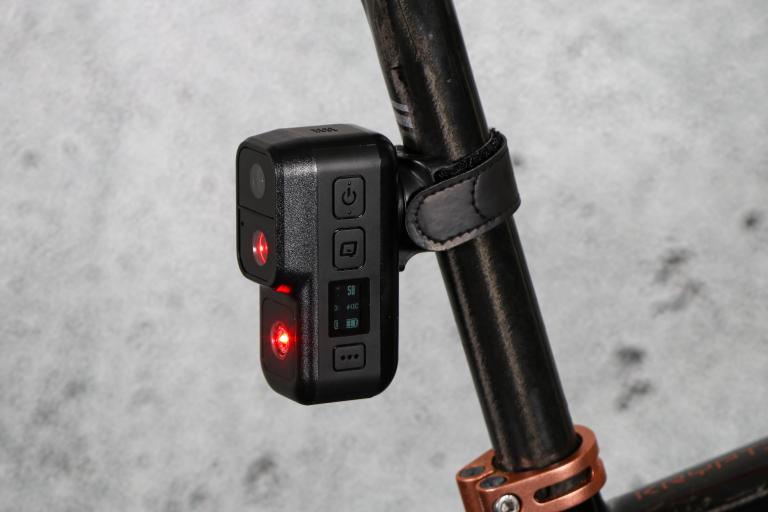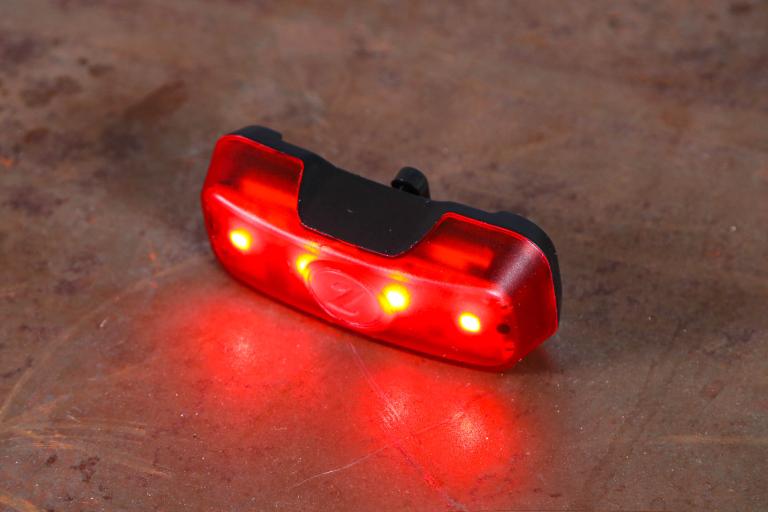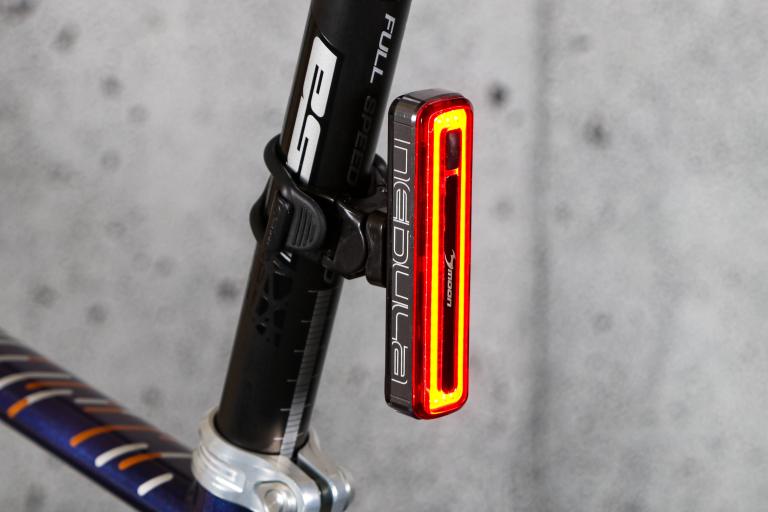- News
- Reviews
- Bikes
- Accessories
- Accessories - misc
- Computer mounts
- Bags
- Bar ends
- Bike bags & cases
- Bottle cages
- Bottles
- Cameras
- Car racks
- Child seats
- Computers
- Glasses
- GPS units
- Helmets
- Lights - front
- Lights - rear
- Lights - sets
- Locks
- Mirrors
- Mudguards
- Racks
- Pumps & CO2 inflators
- Puncture kits
- Reflectives
- Smart watches
- Stands and racks
- Trailers
- Clothing
- Components
- Bar tape & grips
- Bottom brackets
- Brake & gear cables
- Brake & STI levers
- Brake pads & spares
- Brakes
- Cassettes & freewheels
- Chains
- Chainsets & chainrings
- Derailleurs - front
- Derailleurs - rear
- Forks
- Gear levers & shifters
- Groupsets
- Handlebars & extensions
- Headsets
- Hubs
- Inner tubes
- Pedals
- Quick releases & skewers
- Saddles
- Seatposts
- Stems
- Wheels
- Tyres
- Health, fitness and nutrition
- Tools and workshop
- Miscellaneous
- Buyers Guides
- Features
- Forum
- Recommends
- Podcast
review
 NiteRider Solas 100 rear light.jpg
NiteRider Solas 100 rear light.jpg£30.00
VERDICT:
A decent package for staying visible, particularly in urban environments, and on group rides
Weight:
80g
Contact:
At road.cc every product is thoroughly tested for as long as it takes to get a proper insight into how well it works. Our reviewers are experienced cyclists that we trust to be objective. While we strive to ensure that opinions expressed are backed up by facts, reviews are by their nature an informed opinion, not a definitive verdict. We don't intentionally try to break anything (except locks) but we do try to look for weak points in any design. The overall score is not just an average of the other scores: it reflects both a product's function and value – with value determined by how a product compares with items of similar spec, quality, and price.
What the road.cc scores meanGood scores are more common than bad, because fortunately good products are more common than bad.
- Exceptional
- Excellent
- Very Good
- Good
- Quite good
- Average
- Not so good
- Poor
- Bad
- Appalling
The Niterider Solas 100 is small, bright and lasts a reasonably long time. With a decent multi-use bracket, and a few niggles aside, the overall package is good value.
The Solas 100 shares the same bracket as other lights in the range: a perfectly functional thick rubber ladder strap working on any diameter seatpost. The light clicks into a Cateye-like bracket that can be adjusted up or down without tools if you swap between bikes. The angled section is held in place with a shakeproof nylock nut – attention to detail that you don't normally see on lights at this price. The click on mounting is very positive, and I didn't have any concerns about it staying attached once inserted. The light has a built-in clip for attaching to a fabric loop on a backpack or saddlebag, so you have some built-in mounting flexibilty.
> Find your nearest dealer here
The body of the light is transparent red plastic, meaning the LEDs are visible through 180 degrees. It's rated IP64 – meaning dust-tight and proof against 'water splashing against the enclosure from any direction' – so likely to survive a UK winter, sans mudguards. The charging port is located at the bottom under the heftiest rubber bung I've ever seen on a light. Once it's open, the innards aren't further separated from the elements, so make sure it's pushed fully home before venturing out. The small power/mode button on the top could be larger, and with thick winter gloves on it could be hit-and-miss to operate on occasion.
Should any of the above mechanical parts fail, Niterider warranties the Solas 100 for life – which is a rarity and should be a serious factor in your buying decision. LEDs are warrantied for two years, the battery for one.
I must deduct marks for the omission of a memory mode – you have to cycle through all four modes to get to the one you want, and to turn it off. C'mon Niterider, even the smallest of button-cell LEDs can come with a memory mode and long-press-to-off! Fortunately, the one it comes back on as default is the one you're most likely to use: two small flashes and one big 100-lumen one, with a real-world run-time of about 7 hours (advertised as 7:30).
The second mode is an always-on with a full-power pulse from both LEDs at about a 1-second interval. This is the least-frugal at about 4 hours run-time. Third is the single large LED, on constantly with no pulse for about 10 hours, and finally the 'group ride mode' with 15 hours of constant, non-blinky operation.
Battery indication is by way of five blue flashes from the main LED area, when turning off. There are five when charged. You'd think you would then get four, then three etc to show decreasing battery capacity – but no, it's five blue flashes, then after X hours it changes to five red flashes to advise that you are near the bottom of the lithium-polymer barrel. Going off my loose maths it appears to kick in at around 30% of battery remaining. Why it couldn't indicate separate levels of charge, before or at turn on, I don't know. This is not beyond the wit of man, Niterider.
In use, the headline figure of 100 lumens doesn't live up to its expected billing. My go-to benchmark for rear LED lights is the Lezyne Micro Drive – a light with a 70-lumen maximum and 30 lumens as standard. Placing the Lezyne on one side of a long road and the Solas on the other, then driving towards them at 60mph in daylight, the Lezyne's 30 lumens was visible a considerable distance further back than the Solas's 100. I can only attribute this to a more diffuse lens on the Solas, an overly optimistic power output claim, or Lezyne being heroically modest.
> Check out our guide to the best rear lights
That said, I do consider the light output of the Lezyne to be the gold standard for circa-£30 rear lights, so it's a high bar to reach. On its own the Solas 100 does a pretty good job of making you be seen by other road users in close proximity; for example, the 50m radius around an intersection. That more diffuse lens then becomes an advantage, with output not dropping appreciably through an arc of 30 degrees in either direction off-centre.
At night the Solas 100 grabs attention well on urban or open roads. I'd say the two flashing modes are borderline in the motorist-letters-to-the-editor stakes regarding excessive use of red photons, but let's face it – this is probably what you're after. The constant 'group ride mode' works well at not blinding following riders while keeping you legal and reasonably visible.
All in all, when you add in the quality mount, bag/seatpack location options, decent run-time and useful modes, for £30 the Solas 100 becomes a compelling be-seen option.
Verdict
A decent package for staying visible, particularly in urban environments, and on group rides
road.cc test report
Make and model: NiteRider Solas 100 rear light
Size tested: n/a
Tell us what the light is for, and who it's aimed at. What do the manufacturers say about it? How does that compare to your own feelings about it?
It's for people needing visibility in urban areas, or for group rides at night.
Niterider says: "The Solas™ 100 has two powerful LEDs, 4 modes (2 flash/2 steady) and is USB rechargeable. We've implemented what we call 'Group Ride Mode' for cyclists who still want to stay visible and safer but not distract others in the pack."
Tell us some more about the technical aspects of the light?
Daylight Visible Flash (DVF)
100 lumen super bright tail light
Group Ride Mode – be seen without distracting fellow cyclists
Easy on and off seat post strap mount with quick release tab
Convenient USB rechargeable
Super bright day time flash mode
Be Seen by cars = Be Safe
FL1 Standard IP64, water resistant
Lumen Output: 100
Run Time: 4:30 – 15:30hrs
Charge Time: 2:00hrs
Weight: 82g
Battery: Li-Po
Rate the light for quality of construction:
8/10
It's solid.
Rate the light for design and ease of use. How simple was the light to use?
4/10
Could be better. Having to click through the modes is a bit old-hat, and only seeing battery level on turn-off isn't ideal. And the blue-or-red battery level shown is just... silly.
Rate the light for the design and usability of the clamping system/s
8/10
Very well done.
Rate the light for waterproofing. How did it stand up to the elements?
8/10
No complaints.
Rate the light for battery life. How long did it last? How long did it take to recharge?
6/10
Rate the light for performance:
6/10
Could be brighter for what's advertised.
Rate the light for durability:
8/10
Seems robust, and the mount is sturdy.
Rate the light for weight:
7/10
82g is light.
Rate the light for value:
7/10
Overall it's a good package for the money.
Tell us how the light performed overall when used for its designed purpose
Pretty well.
Tell us what you particularly liked about the light
The form factor.
Tell us what you particularly disliked about the light
The need to cycle through modes to turn it off, and always turning on at the start.
Did you enjoy using the light? Yes
Would you consider buying the light? For commuting/about town, or at night, yes. Not for open road daytime riding though.
Would you recommend the light to a friend? Understanding the caveats, yes.
Use this box to explain your score
I'm calling 'Good' here, based on options, output and price. If it had a memory mode and a charging indicator that came on at the start, and if it actually showed decreasing battery levels, it would score 8.
About the tester
Age: 43
I usually ride: Merida Ride 5000 Disc My best bike is:
I've been riding for: Over 20 years I ride: A few times a week I would class myself as: Expert
I regularly do the following types of riding: cyclo-cross, club rides, general fitness riding, mountain biking, Dutch bike pootling
Living in the Highlands, Mike is constantly finding innovative and usually cold/wet ways to accelerate the degradation of cycling kit. At his happiest in a warm workshop holding an anodised tool of high repute, Mike's been taking bikes apart and (mostly) putting them back together for forty years. With a day job in global IT (he's not completely sure what that means either) and having run a boutique cycle service business on the side for a decade, bikes are his escape into the practical and life-changing for his customers.
Latest Comments
- slc 1 hour 29 min ago
TBH the west (Barton Hill) part of the scheme looks like a much larger change than the east (Beaufort Rd) part. Some drivers living in the west...
- Rendel Harris 1 hour 5 min ago
If you bothered looking at the link you would see that it is not one of their reflective jackets, it is fluorescent with only a small number of...
- Owd Big 'Ead 8 hours 13 min ago
You need to get out of Derby then. Go somewhere else, because while not perfect, Derby is streets ahead of the vast majority of places I've lived...
- HoarseMann 10 hours 28 min ago
Driver injured after car flips onto its roof https://www.bbc.co.uk/news/articles/cy0g9rpp8x9o
- mark1a 10 hours 46 min ago
I don't think he wants to talk about it...
- Rendel Harris 11 hours 16 min ago
Ach, dinnae fret...
- Matt Page 11 hours 24 min ago
The Prevelo Alpha Three on the main feature image is 20".
- eburtthebike 11 hours 35 min ago
£100 bonus.
- chrisonabike 11 hours 43 min ago
To be fair if this is our usual revenant they've got form in rewriting history...
- chrisonabike 11 hours 45 min ago
"At the going down of the sun, and in the morning, we will remember them ... we have to because some numpty destroyed the roll of names"....




Add new comment
3 comments
I don't know about doubling power but halving battery life is a given.
I own the Solas 250. Or rather, it's lying on a shelf. About light output and modes, no complaints, it works well.
My issues:
a) It recharges via a micro-usb connection located at the bottom of the light and closed (or supposed to be) with a rubber plug. That plug will simply not stay put and the opening is located right at the spot where spray and crud can hit the light. How they can make such a basic design mistake is beyond me.
b) I never owned nor tested the 100 but all I can say is that for the 250, stated battery life bears no relatiuon at all with what one actually gets. Not.even.close. They have a system where on shutdown a blue indicator light means that you still have 50% or more juice remaining. On the highest flash/fixed setting which is indeed supposed to give about 4 hours autonomy, the indicator flashes red (<50% charge) after a mere 50 minutes in summer, 30 minutes in winter. That means that during winter, I absolutely could not afford to recharge daily, in the office and at home, or risk having the light die on me. I wrote about this to the company and received a tersely worded reply to the effect that battery life is affected by cold (they never responded to my stating that in summer lifespan was 50 minutes). So I wonder: is this a problem affecting only the 250 (when I read online reviews it seems I'm not the only dissatisfied customer) or did the reviewer of the 100 simply copy the manufacturer's data?
I also own the Niterider OLED 1200 front light and have nothing but praise for that, but -at least the Solas 250- rear light is a dud and I'd strongly advise reading some real life reviews by non-sponsored users before spending any cash on their rear lights.
After many, many years my Solas 40 finally gave up the ghost. The button had been getting a bit iffy for a while, difficulty in turning on and off. Battery life was decreasing. But what finally did for it was when I'd finished charging it at work, and was pulling out the cable, the little white lens fell into the light. Got home and took it apart and the whole light just started falling to bits, brittle and cracked. Did manage to superglue it enough to work while I obtained a replacement.
Had to be anothe Solas, for me the perfect bag light. I reinforce the clip with some thin bungee. I searched for the 100, still made by NiteRider, but seemingly unavailable in the UK. Could have got it from the States, but, at far more than the easily available 250. The 100 would have been more than adequate and given me longer run times than the slightly unnecessarily powerful 250.
The 250 is good though. They have given it a "memory", maybe they listen, turn on with a push, 4 modes, cycle through with a push and turn off with a holding push, 4ish seconds. When turned back on it returns to the last mode used. I like the first flash for the road, with the low constant when off road at night. The battery lasts longer than I thought it might, I can use it all week for the commute without it dieing. One thing I have noticed and it relates to Xenophons complaint, I have not owned it in the summer and warmer months, it has been cold. The warning red warning light will flash when turned off after a seemingly short time, maybe on the second day. But, after a short while, maybe to let the battery calm down, maybe to warm up, when given a short test blast, upon turning off the light will do it's blue flash, and I can get most of the rest of the week out of it. Could be the cold, could be the big suck of the powerful bulbs on a small battery. I will know more in time.
I'm now happy with the light, and the concerns I had given Xenophon's complaint have been somewhat relieved.
I have it's predecessor, the Solas 40, I use it as a bag light, reinforced with a bit of elastic as they are a bit pricey. I think it's excellent, use it's first flash when on the road, low constant when on the trails. Suplements my Hope District+. Well built and I can manage the button with gloves on.
Cannot justify upgrading, but if I lose the bag light...
Niterider seem able to double power every year.